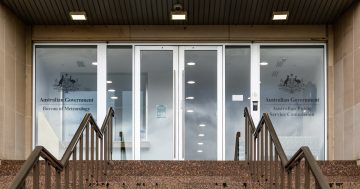
The APS annual remuneration report has just been released. Photo: File.
More than 7000 public servants were redeployed to new government agencies following the election of the Albanese Labor government.
Machinery of government changes resulted in the creation of two new departments, sparking an upheaval of roles and employment status, but without adversely impacting salaries and conditions for most of those affected.
Across the Australian Public Service, however, performance bonuses dropped between 30 per cent and 69 per cent (depending on classification) in the 12 months to 31 December 2022.
The newly published Australian Public Service Remuneration Report 2022 presents a snapshot of public servants’ pay last year and exposes the impact of policy changes that were introduced before the election, as well as early initiatives brought in by the new government.
With the establishment of the Department of Climate Change, Energy, the Environment and Water and also the Department of Employment and Workplace Relations in June last year, thousands of employees were affected.
“Where previous terms and conditions are not preserved, employees are usually moved to the nearest equivalent, or higher pay point for their classification in the gaining agency or maintained on their previous salary where it was above the new agency’s salary scale,” the report, which is produced by the Australian Public Service Commission, states.
“This can impact median remuneration in an agency as a result of differences in gaining and losing agencies’ salary scales and the number of employees affected.”
Annual performance bonuses were crushed following the former Coalition government’s bonus guidance rules, introduced in August 2021, that they should only be awarded under certain circumstances.
The new performance bonus guidance remained in operation during 2022.
“The guidance sets out the Australian Government’s expectations that performance bonuses are used only in limited circumstances,” the report states.
“Circumstances for use include roles that involve significant at-risk investment outcomes, meet significant public milestones or involve non-tax revenue raising.”
The report also reveals that Senior Executive Service wages increased at a greater rate than for those employed in the lower APS ranks.
Weighted median base salaries grew by 4 per cent for the SES and only 1.7 per cent for those in APS ranks.
Casual employees, locally engaged overseas staff, employees on leave without pay and those classified as trainees or cadets were excluded from the data collection for the report.
Agency heads and public office holders were also excluded as their remuneration is set by the Remuneration Tribunal.
Valid data for the 2022 report was received for 149,656 APS employees. This includes 3001 SES employees and 146,655 non-SES employees.
The total headcount increased by 6546 (or 4.6 per cent) compared to December 2021 when it was 143,110.
“From 2021 to 2022, the number of ongoing non-SES engagements and promotions increased by 27 per cent and 13 per cent respectively,” the report states.
“Newly engaged and promoted employees tend to commence on salaries at or near the bottom of their salary scale.
“This change to employee distribution across salary scales is a likely driver of the lower weighted non-SES median base salary increase, relative to wage increases in 2022.”
Also contributing to higher SES salary increases is the fact that more SES are transferring between agencies, more are adding car allowances to their base salaries, and there is a higher rate of direct negotiations between individuals and agencies.
Thirty-five per cent of employees received a 3 per cent wage increase under the Public Sector Interim Workplace Arrangements 2022, which took effect on 1 September 2022.
The interim arrangements provided for employees to receive a one-off 3 per cent wage increase when their next annual wage adjustment fell due. For most employees, however, this adjustment occurred in 2023.
The gender pay gap across the APS is primarily driven by the higher proportion of women at lower classifications, with the report showing the average gap is down from 6 per cent in 2021 to 5.2 per cent in 2022.
“There has, however, been a continued increase in female representation at higher classifications (EL 1 and above) since 2018, along with a slight decrease in the proportion of females at lower classifications,” the report states.
“This trend is consistent with the narrowing gender pay gap over time.”
Original Article published by Chris Johnson on Riotact.










